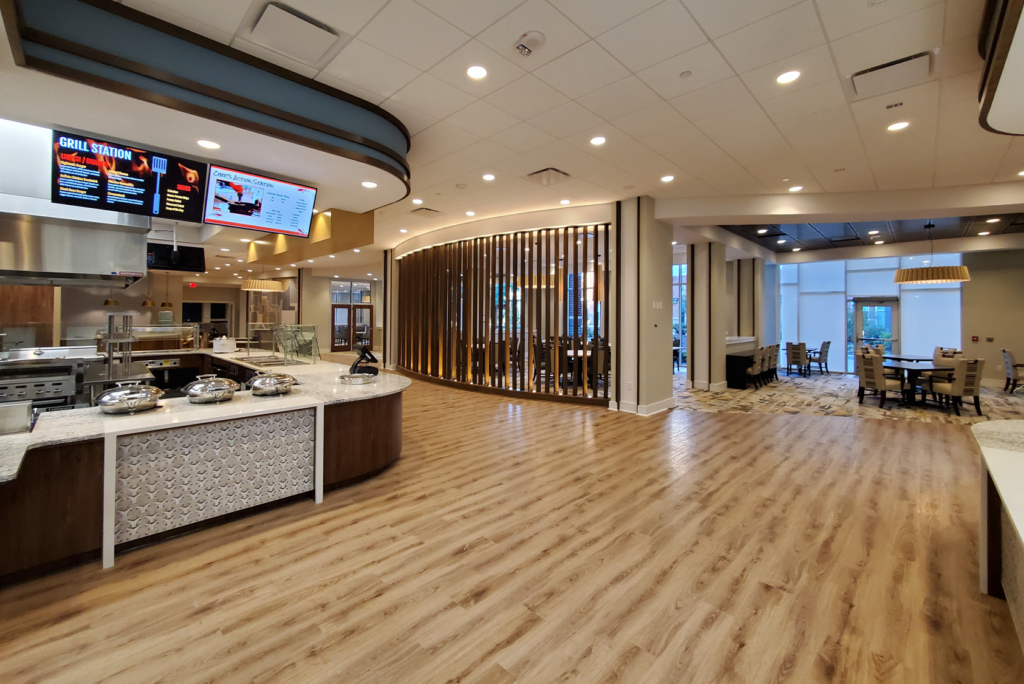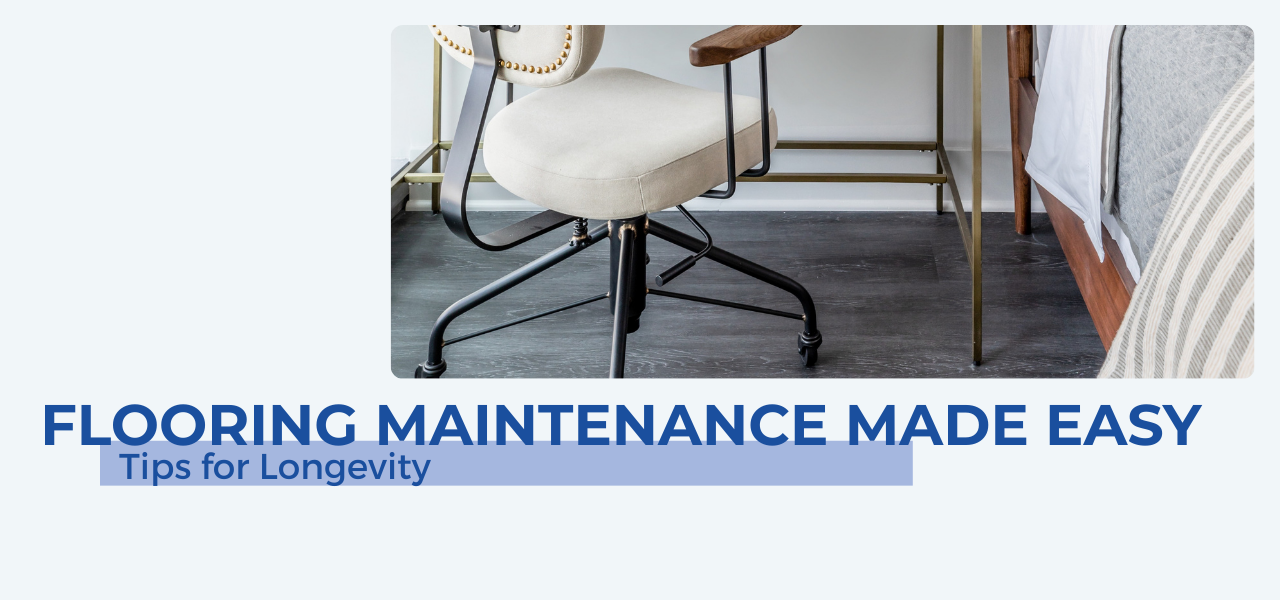Keeping floors in top condition requires proper floor maintenance and preventative measures to protect the floor. A well-maintained floor enhances aesthetics and extends its lifespan. With the right approach, your floors will stay durable and attractive for years to come. Keep these maintenance tips in mind to protect your investment.
protecting new floor coverings
It is preferred that floor covering installation be completed after all other building trades have done their work. If construction work is to be continued after the floor covering is installed, the floor must be protected from soil and damage.
initial cleaning
Depending on the type of floor covering installed, specific initial maintenance procedures may be necessary. This could be as simple as a deep cleaning process to remove factory coatings and/or soil from the construction process or a more complex procedure such as applying some type of coating to the floor.
Daily Cleaning for Lasting Results
Regular cleaning prevents dirt buildup and surface damage. Sweep or vacuum daily to remove dust and debris. Use a damp mop with a pH-neutral cleaner, properly mixed, to avoid residue. Avoid – “mop and shine,” oil or soap-based cleaners that can leave a film that attracts dirt. Never use solvents or other harsh chemicals that can degrade floor finishes over time.
Choosing the Right Cleaning Products
Selecting appropriate cleaning products and procedures is essential for floor longevity. Check manufacturer guidelines before using any cleaner, and be sure to mix cleaners according to label instructions since most products are sold as concentrates mixed with water. More cleaning solutions are not always better! For hard floors, opt for non-abrasive products to maintain surface integrity.
Preventing Scratches and Scuffs
Protect floors by placing felt pads under furniture legs. Be sure that chair glides are at least 1 inch in diameter, and that any wheeled chairs have the proper castors. Also, it is usually recommended that a protective chair mat be used over the floor covering where rolling desk chairs are present. Avoid dragging objects across the surface – protect the floor from damage before moving anything heavy. At outdoor entrances, the use of entrance mats is critical to keep soil and water off the floor, to minimize wear, and to keep the floor safe.

Spill Management and Moisture
Water and other liquids can cause severe damage if left unchecked. Wipe up spills immediately to prevent stains or other damage. Use mats near entrances to absorb rain, snow, and other contaminants from the outdoors. Humidity can affect the performance of moisture-sensitive floor coverings. A humidifier or dehumidifier may be needed to maintain stable flooring conditions.
Extending the Life of Durable Flooring
Durable floor care involves routine inspections and minor repairs. Check for loose tiles, buckling carpet, warped planks, or worn-out grout. Addressing minor issues early prevents costly replacements. Following a structured floor maintenance schedule ensures longevity and performance.
Proper Maintenance for Different Flooring Types
Each flooring material requires specific maintenance products and techniques. Hardwood, cork or bamboo floors may need occasional polishing and refinishing. Vinyl and laminate benefit from gentle cleaning and scratch prevention. Tile flooring is generally very low maintenance, but some products may need to be sealed periodically to maintain water and stain resistance. Carpets require regular vacuuming and professional cleaning at least once a year and potentially more often for heavily trafficked areas. Done correctly, regular cleaning of carpet is beneficial, and is not harmful as many people believe.
Protecting Floors in High-Traffic Areas
Entryways, hallways, and commercial spaces experience heavy foot traffic. Use protective mats to reduce dirt accumulation. Rotating furniture placement prevents uneven wear patterns. Implementing a consistent cleaning schedule ensures the flooring remains in top condition.

Avoiding Common Flooring Maintenance Mistakes
Using excessive water during cleaning can damage floors, as can the incorrect mixing of cleaning solutions. More is not necessarily better! To prevent buildup, avoid wax, oil, or solvent-based cleaners on hard surfaces or resilient floor coverings. Skipping regular maintenance shortens a floor’s lifespan. Understanding the right flooring maintenance tips helps maintain optimal floor performance.
The Importance of Seasonal Floor Maintenance
Different seasons impact flooring in unique ways. Winter months bring water, ice, and salt, requiring extra cleaning and the use of a good matting program to keep those contaminants off the floor. Summer heat and year-round direct sunlight on the floor can cause expansion, fading, or other damage to many types of floor coverings, so always use proper window coverings to protect your floors. Adjusting maintenance routines seasonally prevents unnecessary damage. Consistent care enhances flooring durability year-round.
Proper maintenance ensures floors remain visually appealing and structurally sound. Regular cleaning, preventive measures, and material-specific maintenance products and procedures are key. Following a reliable floor maintenance program simplifies upkeep. With these strategies, your floors will withstand daily use and maintain quality over time.
For specific maintenance guidelines tailored to Cobalt’s collections, visit our Technical Page. Do you still have questions? Cobalt Surfaces’ team of flooring experts is here to help! Contact us today for personalized advice and guidance on your next project.

